Durham, NC Pollen and Allergy Report for Summer 2023
Pollen Allergy Trends in Durham, NC
When is pollen lowest in Durham, NC?

February
Lowest month total PPM
Avg. PPM
When is pollen highest in Durham, NC?

April
Highest month total PPM
Avg. PPM
How does pollen in Durham, NC compare to North Carolina?
Durham has a lower average PPM than the state of North Carolina.
Durham yearly avg PPM:
North Carolina yearly avg PPM:
How does pollen in Durham, NC compare to the USA?
Durham has a higher average PPM than the USA.
Durham yearly avg PPM:
USA yearly avg PPM:
Is pollen worse this year in Durham, NC?
Spring 2023 was about the same as 2022.
Spring 2023 PPM:
Spring 2022 PPM:
Average PPM in Durham, NC
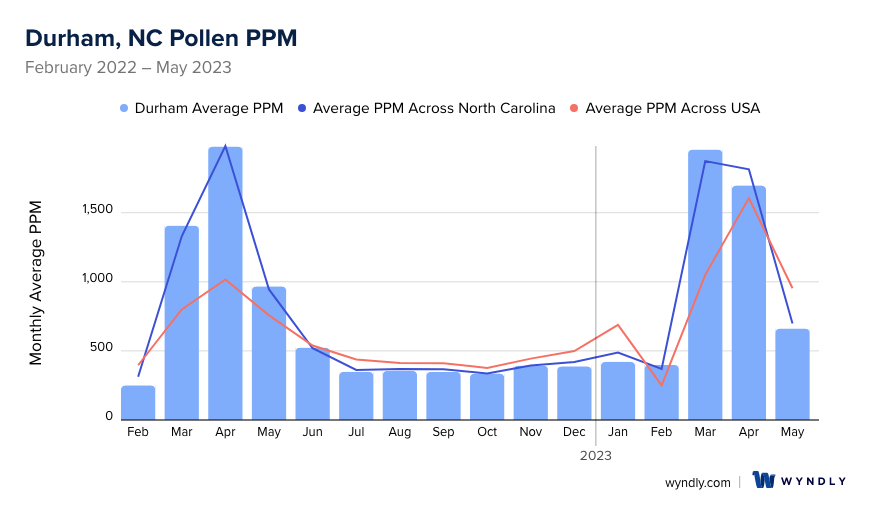

Durham, NC Pollen and Allergy Breakdown by Month
Grass
When is grass pollen highest in Durham, NC?
April has the highest grass pollen in Durham, NC with an average PPM of
When is grass pollen lowest in Durham, NC?
December has the lowest grass pollen in Durham, NC with an average PPM of
Tree
When is tree pollen highest in Durham, NC?
March has the highest tree pollen in Durham, NC with an average PPM of
When is tree pollen lowest in Durham, NC?
July has the lowest tree pollen in Durham, NC with an average PPM of
Weed
When is weed pollen highest in Durham, NC?
April has the highest weed pollen in Durham, NC with an average PPM of
When is weed pollen lowest in Durham, NC?
February has the lowest weed pollen in Durham, NC with an average PPM of
Durham, NC Pollen Monthly Breakdown by Pollen Type
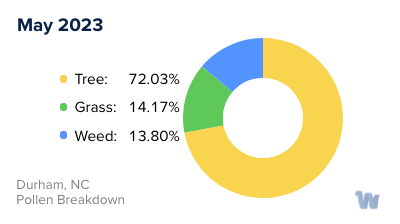

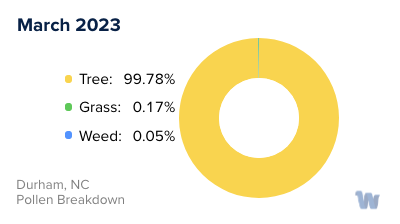
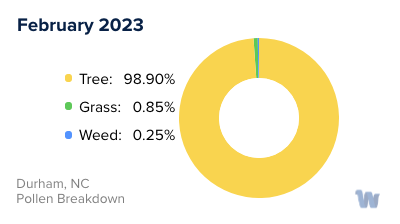

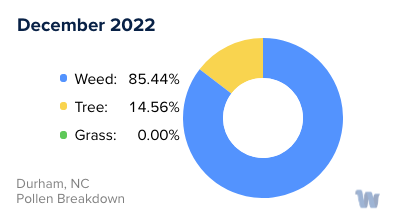
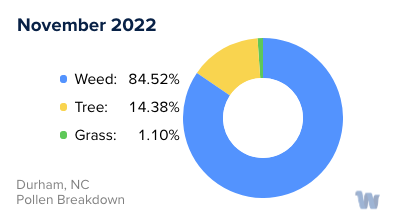
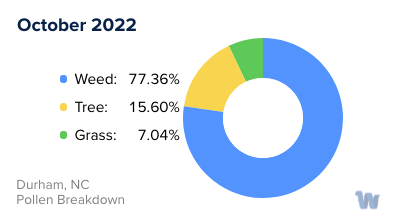
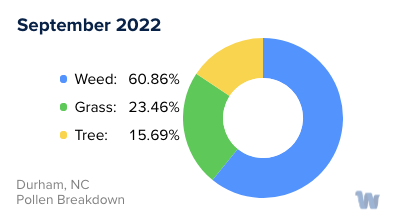

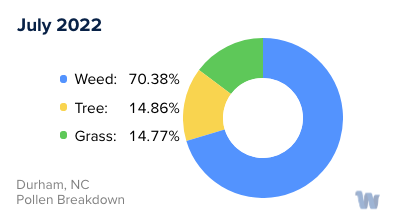
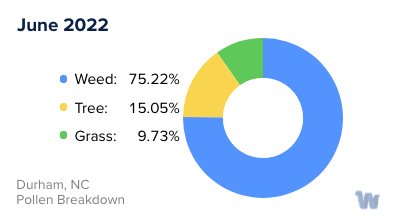
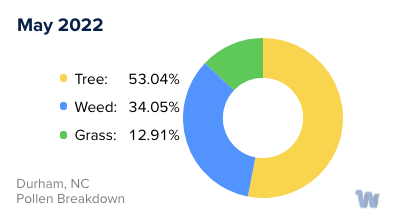


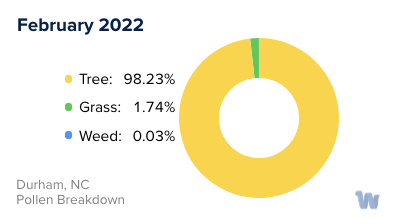
Pollen and Hay Fever in Durham, NC
Living in the beautiful city of Durham, North Carolina, you may find yourself swept up in the vibrancy of its blossoming springs and colorful autumns. However, with the changing of the seasons also comes the emergence of pollen, which, for many, signals the start of pollen allergies and hay fever.
Pollen allergies, also known as hay fever, are a common reaction to the tiny grains released by trees, grasses, and weeds to fertilize other plants. In the Durham area, there are three major types of pollen to be aware of: tree pollen, grass pollen, and weed pollen.
Tree pollen tends to make its first appearance in the early spring. The most common culprits in Durham include oaks, pines, and maples. These trees release copious amounts of pollen that can spread over large areas, even being carried on the wind for miles. As a result, even if you don't have one of these trees in your backyard, you can still find yourself affected.
Following tree pollen season, grass pollen takes the stage in late spring and early summer. The main types of grasses that contribute to pollen allergies in Durham are Bermuda grass, ryegrass, and Kentucky bluegrass. These grasses release pollen that, like tree pollen, can be carried on the wind, causing symptoms in those who are allergic.
Finally, as summer transitions into fall, weed pollen begins to emerge. The most common weed in Durham associated with pollen allergies is ragweed, but others like lamb's quarters, sagebrush, and pigweed can also be problematic. These weeds release pollen that can travel great distances and trigger allergies.
Understanding the types of pollen and their seasons can help you anticipate and prepare for pollen allergies and hay fever. Remember, even though pollen can be a nuisance, it's also a sign of the natural beauty and biodiversity that Durham, North Carolina, has to offer.

